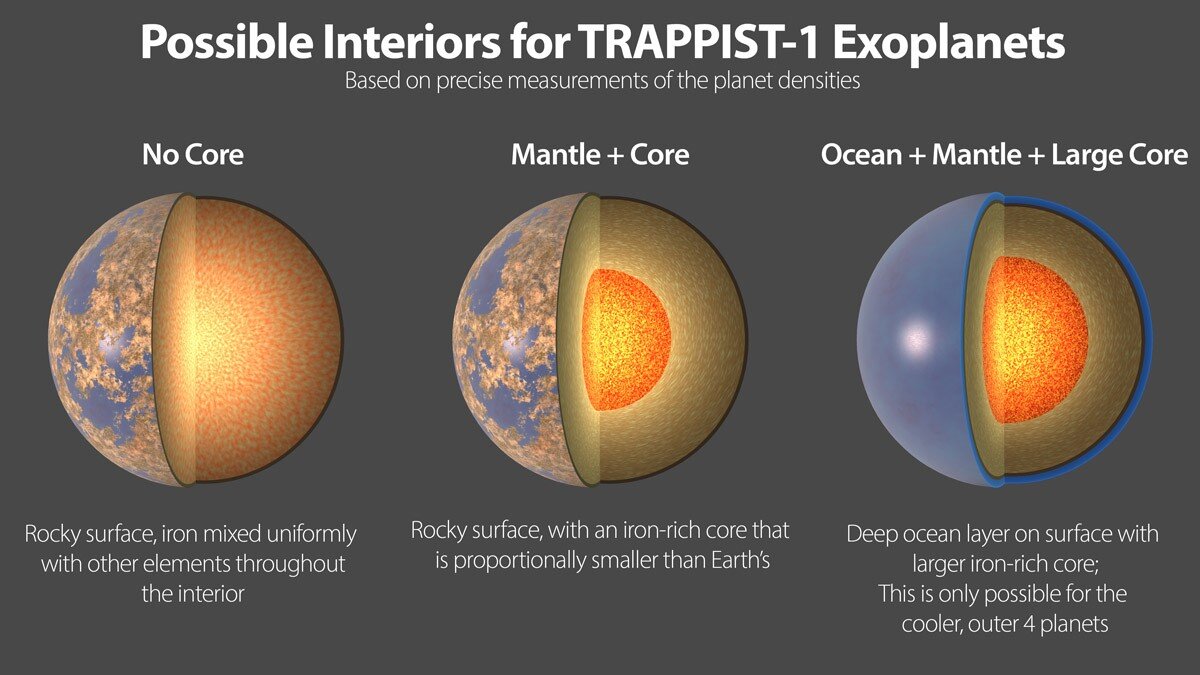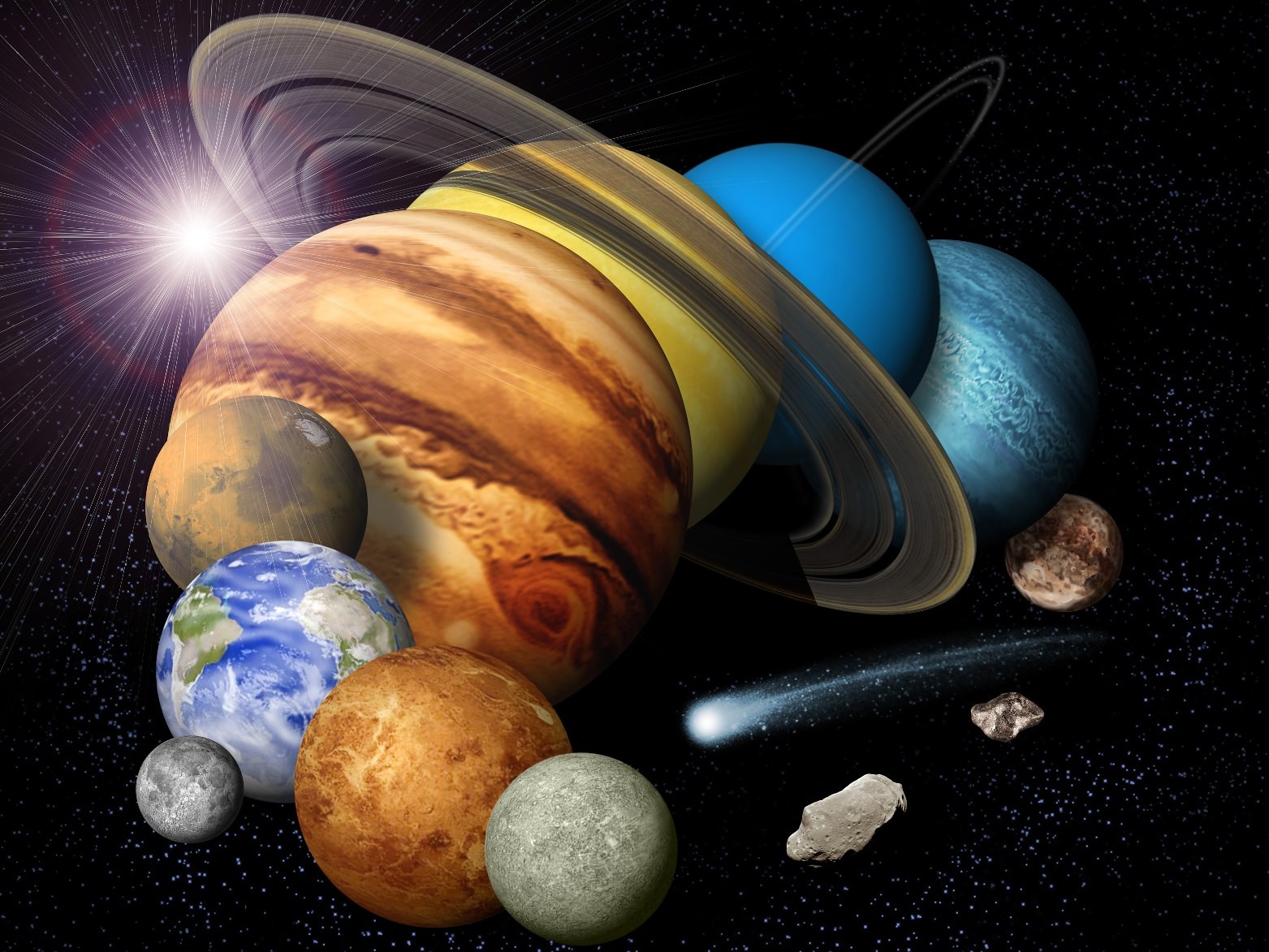There are eight planets in our solar system, each with its own unique physical characteristics. One of the key ways to measure a planet’s physical properties is by its density. The density of a planet is its mass divided by its volume.
This gives us a good indication of how much “stuff” is packed into a given space.
So, which planet has the lowest density in our solar system? That would be Saturn.
Saturn has a mass of 5.68 x 10^26 kg and a volume of 8.27 x 10^14 km^3. This gives it a density of 0.69 g/cm^3. That’s less than half the density of Earth!
Why is Saturn so much less dense than the other planets?
There are many planets in our solar system, and each one has a different density. The planet with the lowest density is Saturn. This is because Saturn is mostly made up of gas and doesn’t have a solid surface.
The next lowest density planet is Jupiter, which is also made up of gas. The highest density planet is Earth, which is made up of solid rock.
Solar System: Planets In Order Of Density [Lowest To Highest]
What is the Lowest Density Planet in Our Solar System
There are actually four candidates for the lowest density planet in our solar system: Mercury, Mars, Saturn’s moon Titan, and Neptune’s moon Triton. All four of these bodies have a mean density less than that of water.
Mercury is the smallest and closest planet to the Sun.
It has a diameter of just under 4,879 km and a mass of 3.301 x 10^23 kg. This gives it a mean density of 5.427 g/cm^3, making it just a bit denser than Earth’s moon.
Mars is the next planet out from the Sun.
It’s slightly larger than Mercury, with a diameter of 6,779 km. But its mass is only 6.39 x 10^23 kg, about half that of Mercury. This gives Mars a mean density of 3.933 g/cm^3, making it the least dense of the rocky planets.
Saturn’s moon Titan is the largest moon in the solar system. It’s even bigger than Mercury, with a diameter of 5,150 km. But its mass is only 1.345 x 10^23 kg, about a quarter that of Mercury.
This gives Titan a mean density of only 1.88 g/cm^3, making it the least dense of all the solar system’s major moons.
Neptune’s moon Triton is the final candidate for the lowest density planet in the solar system. It’s smaller than Titan, with a diameter of only 2,700 km.
But its mass is only 2.14 x 10^22 kg, less than one twentieth that of Titan. This gives Triton a mean density of only 0.786 g/cm^3, making it the least dense body in the solar system.
So, which is the lowest density planet in our solar system?
It depends on how you define “planet.” If you only count the major planets, then Mars is the lowest density planet. If you count all the solar system’s major moons, then Titan is the lowest density planet. But if you count all the bodies in the solar system, then Triton is the lowest density planet.

Credit: phys.org
Which Planet Has the Lowest Density
There are many factors that contribute to a planet’s density. For example, a planet with a large core of heavy elements will be more dense than a planet with a small core. Additionally, a planet with a thick atmosphere will be less dense than a planet with a thin atmosphere.
The planet with the lowest density is Saturn. This is due to a combination of factors, including its large size and its gaseous composition. Saturn’s large size means that its gravity is not as strong as the gravity of smaller planets.
Additionally, Saturn is mostly composed of hydrogen and helium, which are very light elements. As a result, Saturn has a lower density than any other planet in the solar system.
Which Planet Has the Highest Density
The highest density planet in our solar system is Jupiter. This gas giant has a mass of 1.898×10^27 kg and a diameter of 139,822 km. This gives Jupiter a mean density of 1.326 g/cm^3.
Jupiter is the fifth planet from the sun and is the largest planet in our solar system.
Jupiter is made up of hydrogen and helium. It has a small rocky core that is surrounded by a dense layer of hydrogen and helium gas.
The high pressure and temperature in Jupiter’s interior creates a liquid metallic hydrogen layer. Jupiter has a thick atmosphere made up of hydrogen, helium, and ammonia.
The high density of Jupiter is due to the planet’s large mass and small diameter.
Jupiter has the highest mass of any planet in our solar system. It also has the smallest diameter of any gas giant. Jupiter’s high density gives the planet a very strong gravitational pull.
Jupiter’s gravity affects the other planets in our solar system. Jupiter’s gravity pulls on the smaller planets and affects their orbits. Jupiter’s gravity also affects the path of comets that come close to our solar system.
The high density of Jupiter makes it the most massive planet in our solar system. This planet’s huge mass gives it a very strong gravitational pull. The gravity of Jupiter affects the orbits of the other planets in our solar system.
Which Planet Has the Strongest Winds in the Solar System
The strongest winds in the solar system are found on Neptune. These winds can reach speeds of up to 2,100 kilometers per hour. These winds are so strong that they can actually cause the planet to vibrate.
The winds on Neptune are thought to be caused by the planet’s extreme temperatures. Neptune has a very hot core which heats the atmosphere and causes the winds to blow.
Conclusion
The lowest density in our solar system is found on Saturn’s moon, Titan. Titan is made mostly of ice and rock, and is much less dense than Saturn itself. This makes Titan the perfect place to study the effects of low gravity on geological processes.
